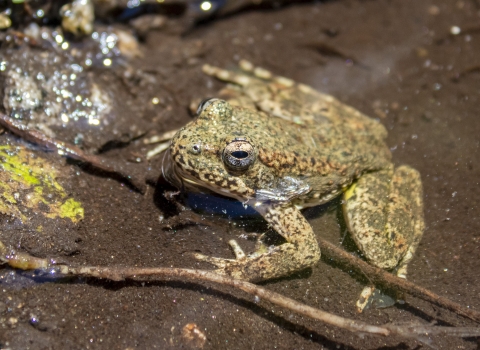Two springsnail species in eastern and southern Arizona have been added to the list of animals protected under the Endangered Species Act – the Three Forks springsnail as endangered and the San Bernardino springsnail as threatened. The listing includes the designation of critical habitat for each species. The U.S. Fish and Wildlife Service initially proposed protection last April.
“Only the most observant person would notice either of these small snails in the wild, but their spring ecosystems are unique locales in typically arid Arizona,” said Steve Spangle, U.S. Fish and Wildlife Service’s Arizona field supervisor. “The framers of the Endangered Species Act called us to conserve the ecosystems upon which these species depend. The springsnails and the people that enjoy Arizona’s outdoors will benefit from the conservation of these spring areas.”
The endangered Three Forks springsnail faces threats primarily from wildfire, exposure to wildfire suppression chemicals, predation by nonnative crayfish, and habitat alterations from elk wallowing. The Three Forks springsnail was historically distributed in three separate spring complexes; Three Forks Springs, Boneyard Bog Springs, and Boneyard Creek Spring, in the North Fork East Fork Black River Watershed of the White Mountains in Apache County, east-central Arizona. Critical habitat designation was initially proposed for 11.1 acres encompassing Three Forks Springs and Boneyard Bog Spring. However, new information led the Service to increase the size of the Boneyard Bog Springs Unit to 5.3 acres and add the Boneyard Creek Unit for a total of 17.1 acres of designated critical habitat.
The San Bernardino springsnail faces threats primarily from water depletion, springhead inundation and drought. Historically, in the U.S. the San Bernardino springsnail occurred at several springs along the headwaters of the Rio Yaqui, but is now limited to two springs on the John Slaughter Ranch Museum, Cochise County, Ariz. New information received since the proposal was published shows that springsnails at five sites in Sonora, Mexico, are San Bernardino springsnails, indicating the species is more widely distributed than previously believed. Critical habitat has been designated on 0.8 acres of San Bernardino National Wildlife Refuge and 1.2 acres on the John Slaughter Ranch. We do not designate critical habitat in foreign countries.
Critical habitat is a term in the Endangered Species Act that identifies geographic areas containing features essential for the conservation of a threatened or endangered species, and which may require special management considerations or protection. Designation of critical habitat does not affect land ownership, establish a refuge or preserve, and has no impact on private landowners taking actions on their land that do not require federal funding or permits.
Federal agencies that undertake, fund or permit activities that may affect critical habitat are required to consult with the Service to ensure such actions do not adversely modify or destroy designated critical habitat.
In the arid southwest, springsnails are largely relicts of the Pleistocene, and are typically distributed across the landscape as geographically isolated populations. Springsnails are strictly aquatic and respiration occurs through an internal gill. These snails are egg-layers and upon hatching, tiny snails crawl out into their adult habitat. Springsnails graze primarily on algae. Their most common habitat is a “rheocrene” – a spring emerging from the ground to form a free-flowing stream.
The Endangered Species Act provides a critical safety net for America’s native fish, wildlife and plants. This landmark conservation law has prevented the extinction of hundreds of imperiled species across the nation and promoted the recovery of many others.
The Service’s determination will publish in the Federal Register tomorrow and become effective on May 17, 2012. Relevant documents are available at: http://www.fws.gov/southwest/es/arizona/ or by request from the Field Supervisor, U.S. Fish and Wildlife Service, 2321 W. Royal Palm Rd., Suite 103, Phoenix, AZ 85021-4951; phone 602/242-0210 or fax 602/242-2513.



